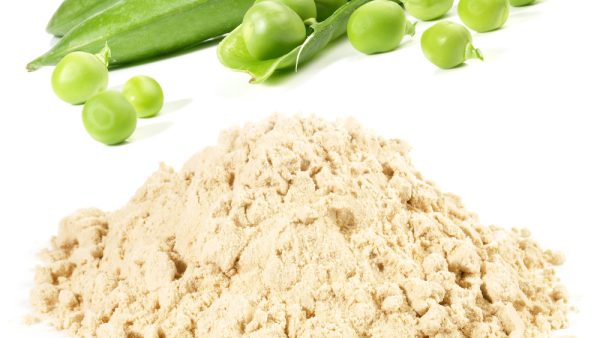
The global demand for protein is increasing year by year. At present, about one billion people in the world cannot obtain enough protein. In order to meet this demand, it is very meaningful to use plant protein to partially replace animals. Compared with animal protein, plant protein exhibits environmental friendliness, sustainability, ethical selectivity, and a more balanced amino acid composition. Similarly, high yield and low environmental requirements are also a major advantage of soy protein instead of animal protein. Pea is the second most important bean crop, its annual output is second only to soybean, and pea protein is hypoallergenic and has a balanced amino acid ratio, making it the preferred vegetable protein to replace animal protein. However, due to the inherent beany flavor and processing technology characteristics of pea protein, its application in food and beverage is still a difficult task for the food industry.
Pea protein needs to undergo pretreatment steps before extraction, such as washing, drying, sorting, dehulling or splitting, so that the extraction of pea protein is not affected by other components. Oxidation of fatty acids is the main reason for the beany smell of pea protein, and the bad flavor can be removed by supercritical extraction combined with solvent removal of lipids in pea flour. Germination treatment is an effective means to improve functionality, nutritional value, processing characteristics and improve bad flavor. Studies have shown that sprouting for longer than one day increases bean-associated odors, possibly through increased lipoxygenase activity or the release of protein-bound bean-associated volatiles. Fermentation of pea can be used to improve protein digestibility, reduce antinutrients, and increase mineral bioavailability, so fermentation may also be a promising treatment for pea.
Wet extraction is a common method for commercial pea protein at present, mainly alkaline extraction-isoelectric point precipitation method. Although wet extraction can extract pea protein with sufficient purity, the natural structure and functional properties of the protein will be damaged, so it is necessary to Conduct further optimization studies. Dry extraction mainly involves two key steps, milling and air classification. Milling is mainly to separate protein and starch by grinding pea seeds, but the grinding intensity can separate starch and protein matrix, and also cause starch granules to be worn out, resulting in the inability to separate protein and starch. Air classification refers to the use of air power to separate flour according to particle size distribution to achieve the purpose of separating protein and starch. Dry extraction is green, efficient, cost-effective, and sustainable. The main disadvantage is the low purity of the obtained protein. In addition to dry and wet extraction, there are currently mild mixed extraction methods to separate proteins. The mixed method refers to the use of centrifugal force or other purification methods to separate the fine components that cannot be separated layer by layer after dry separation. Improves purity. After protein extraction, subsequent processing methods can be used to improve protein structure, processing characteristics and nutritional characteristics, such as fermentation, enzymes, chemical and thermal processing.
Yellow pea protein is composed of albumin (10-20%) and globulin (70-80%), pea albumin is a rich source of essential amino acids and has higher nutritional value, while the functional properties of pea globulin have greater application value. Pea protein promotes gains in muscle thickness, especially for those who improve muscle strength. In addition, pea proteins exhibit specific functional benefits, including solubility, emulsifying and foaming abilities, emulsion and foam stability, and gel and film-forming abilities. Incorporating pea protein into staple food can increase the protein content in the diet, and at the same time provide certain functions for the formula. Currently, the reported foods using pea protein are bread, noodles, baked goods, snacks, meat products and beverages. Although pea protein can improve some characteristics of food, such as improving the tissue structure of snacks and making puffed snacks more crispy. However, there are still big challenges. For example, the beany smell leads to a low food score, and the addition of pea protein in beverages leads to a decrease in nutritional value, which is not suitable for long-term drinking.
Pea protein is a potential ingredient in food and beverage research. Adding it to food can supplement the protein intake in the diet, and it can also endow the food with some special characteristics. However, it still faces many problems in actual production and processing Huge challenges, mainly sensory properties and functional properties. At present, some new formulas and new processes have been proposed, and preliminary results have been achieved, which can meet food requirements and consumer expectations. However, theoretically based studies on the interactions between pea protein and other components in food matrices are still lacking. The future direction mainly lies in the study of new technologies to improve the functional and sensory properties of pea protein, and the study of the interaction between pea protein and other components.
